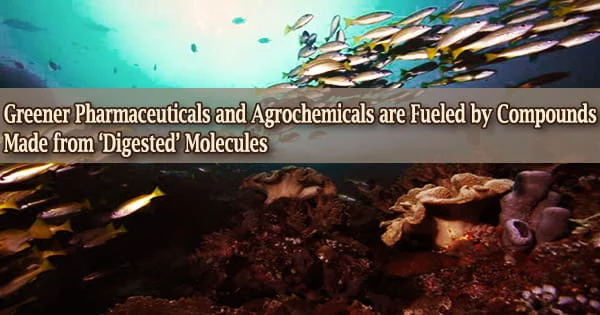University of Warwick scientists have found a method for manufacturing key chemical building blocks for use in the pharmaceutical and agrochemical industries that resembles how plants make them.
The scientists designed bacteria that ‘digest’ chemicals to synthesize new compounds in a process that is reusable and creates few waste products, using enzymes in the same manner that plants do.
Their findings were published in the journal ACS Catalysis and could aid the pharmaceutical and agrochemical industries in designing more environmentally friendly manufacturing processes.
The researchers were particularly interested in recreating the indole-3-acetamide (IAM) pathway in plants, which allows the plant to create chemicals such as indolic amides, carboxylic acids, and auxins.
These compounds have a wide range of agricultural and medicinal applications, but they are difficult for the industry to make without the use of harmful chemical catalysts.
While scientists have known how nature creates these molecules for decades, there has never been a device that could take advantage of it. For the first time, a team from the Warwick Integrative Synthetic Biology Centre has created a method that harnesses enzymes in a sequence of cascade events to break down molecules and synthesize them into the desired compounds, much like a plant does.
We knew that multiple pathways to Auxin molecules exist in plants. Also, some plant pathogenic bacteria utilize these routes to infect and grow in plant roots and galls. However, reconstructing it in an industrial and friendly microbial host always we have encountered several functional issues. By engineering these enzymes, we can adapt the process for the purpose of large-scale production, making it easily accessible, purifiable, and compatible. The advantage here is the applicability of these enzymes, as the existing enzymatic solutions to make amide and carboxylic acid are challenging, time-consuming, and require many expensive components.
Dr. Binuraj Menon
Dr. Binuraj Menon of the University of Warwick School of Life Sciences, currently situated at the University of Portsmouth, led the project, which was sponsored by UK Research and Innovation and the Royal Society.
He said: “We knew that multiple pathways to Auxin molecules exist in plants. Also, some plant pathogenic bacteria utilize these routes to infect and grow in plant roots and galls. However, reconstructing it in an industrial and friendly microbial host always we have encountered several functional issues.”
“By engineering these enzymes, we can adapt the process for the purpose of large-scale production, making it easily accessible, purifiable, and compatible. The advantage here is the applicability of these enzymes, as the existing enzymatic solutions to make amide and carboxylic acid are challenging, time-consuming, and require many expensive components.”
Enzymes provide a number of functions in living creatures, but they are best recognized for breaking down food in the human digestive system. As biocatalysts, they play a variety of roles in speeding chemical reactions.
Enzymes are being studied as alternatives to present chemical processes for reducing industrial emissions and resources, making them an ideal choice for transitioning to more environmentally friendly industrial operations.
The scientists utilized non-pathogenic bacteria that were modified to overexpress the enzymes for their study. In mild and watery circumstances, these enzymes can be isolated for reactions, or the bacteria can be employed directly for reactions.
Chemicals are made from inexpensive components like glucose, allowing it to be easily scaled up and reused with little waste or environmental damage, as is typically the case with chemical catalysts. Microbes and enzymes can be redesigned to have new talents and applications by repurposing them.
Dr. Menon added: “We are basically harnessing the power of nature to solve many problems in the chemical, pharmaceutical, agriculture, and manufacturing industries via engineering microbes and enzymes. Synthetic Biology is essentially using biology for synthetic purposes, and here we have displayed how blending and mixing it with different enzymes can be used with many similar molecules.”
“In the near future, additional engineering and lab-based evolution of these enzymes will allow us to prepare bespoke molecules and targeted chemicals. The engineered bacteria could also be used to coat seeds for healthy germination and root development, or as a weed killer by tuning the auxins, with many direct applications and possibilities.”





